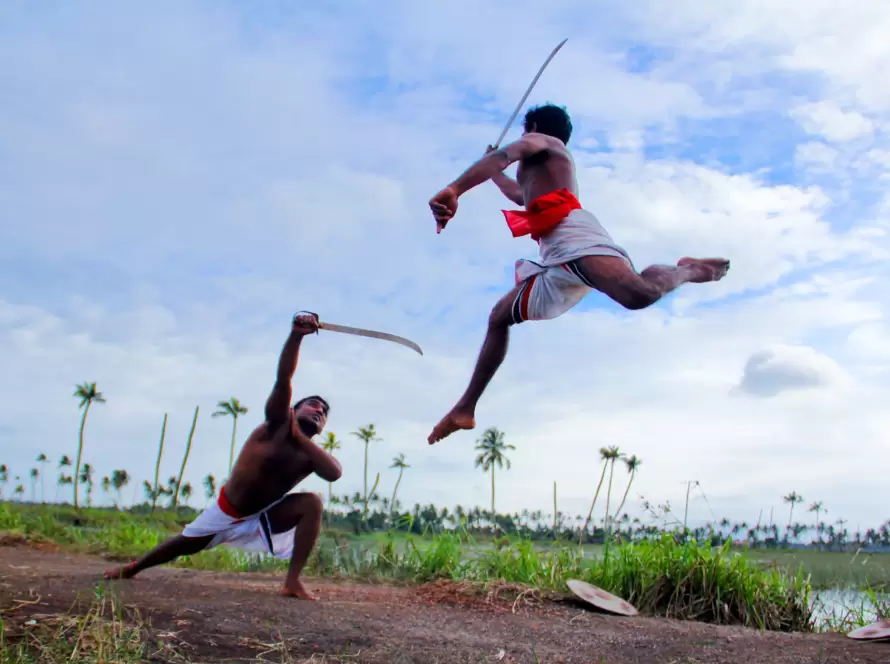Generated by Contentify AI
- Introduction
- Exploring Festivals and Traditions
- Regional Cuisine Delights
- Art and Handicrafts Showcase
- The Rich History of India

Key Takeaways
- India has a rich and diverse cultural heritage with various traditions and practices.
- Each region in India has its own unique cultural identity, including language, food, clothing, and customs.
- The cultural diversity of India is celebrated through festivals, dance, music, art, and religious practices.
Introduction
Discovering the cultural diversity of India is akin to embarking on an exhilarating journey through a vibrant mosaic of traditions, languages, and communities. This vast country, stretching from the snowy peaks of the Himalayas to the tropical greenery of Kerala, offers a rich tapestry of cultural experiences that are as varied as its landscape. With over 1,600 languages spoken and a multitude of ethnic groups, each region of India presents its unique blend of cultural practices, festivals, and ways of life, making it a fascinating exploration for any curious traveler or culture enthusiast. The diversity of India is not just limited to its geographical spread but is deeply ingrained in the everyday life of its people, reflected in their food, art, and social customs. Engaging with this diversity offers an unparalleled insight into the complexity and dynamism of Indian society.
Exploring Festivals and Traditions
Embarking on the journey of discovering the cultural diversity of India, one cannot overlook the kaleidoscope of festivals and traditions that paint the country in vibrant hues. Each festival, deeply rooted in history and mythology, not only showcases the rich cultural fabric of the region but also brings to life the intricate tapestry of beliefs and practices that have evolved over millennia.
From the high-energy celebration of Diwali, the Festival of Lights, which illuminates the entire country with its brilliance, to the majestic procession of Durga Puja in West Bengal, the diversity is staggering. Diwali, celebrated across India, signifies the victory of light over darkness and good over evil, bringing families together in a joyous celebration filled with fireworks, sweets, and decorations. On the other hand, Durga Puja commemorates the victory of the goddess Durga over the buffalo demon Mahishasura, showcasing elaborate rituals, cultural performances, and art installations.
Moving south, the harvest festival of Pongal in Tamil Nadu offers a glimpse into the agrarian roots of Indian culture, where thanksgiving takes the form of colorful rangolis, traditional dances, and sumptuous feasts. Similarly, in the north, the Sikh festival of Vaisakhi marks the Punjabi New Year with vibrant parades, folk dances like the bhangra, and community feasts called langars, reflecting the communal harmony and agricultural lifestyle of the region.
The monsoon festivals, such as Onam in Kerala and Teej in Rajasthan, reveal another facet of India’s cultural diversity. Onam celebrates the return of the legendary king Mahabali with boat races, flower arrangements, and traditional feasts, while Teej is marked by women swinging on beautifully decorated swings, singing songs, and fasting for marital bliss.
India’s festivals and traditions are not just annual celebrations; they are living testimonies to the country’s rich historical legacy and cultural dynamism. They offer a window into the soul of India, where the ancient and the modern coexist seamlessly, and the essence of unity in diversity is celebrated. In discovering these festivals and traditions, one not only witnesses the external spectacle but also gains an intimate understanding of the spiritual and emotional significance that binds the people of India to their cultural heritage.
Web Development & Design Services
Shakti Web Solutions provides Website Development & Website Design Services. Customize your store facilities as needed and benefit from our experienced team with over 5 years of experience.
Regional Cuisine Delights
India’s regional cuisine offers an astonishing variety of flavors, ingredients, and cooking techniques that mirror the country’s multifaceted cultural landscape. Each region brings its own unique dishes to the table, creating a gastronomic journey that is integral to discovering the cultural diversity of India. From the spicy, seafood-rich curries of the coastal areas to the vegetarian thalis of the south and the rich, creamy gravies of the north, Indian cuisine is a testament to the country’s vast cultural heritage.
In the northern regions, the influence of Mughal culinary traditions is evident in the popular biryanis, kebabs, and naans. The rich, aromatic flavors of dishes like Rogan Josh and Butter Chicken speak to a history of culinary refinement and cultural fusion. Punjab, known as the breadbasket of India, offers a hearty fare of tandoori chicken, dal makhani, and chole (spicy chickpeas), accompanied by fluffy, freshly baked bread like naan and roti.
Moving towards the western part of India, Gujarat serves a completely vegetarian menu that emphasizes sweetness with a hint of spice, showcasing dishes like dhokla and khandvi. In contrast, the coastal state of Goa presents a seafood extravaganza, heavily influenced by Portuguese colonization, with dishes such as Goan prawn curry and pork vindaloo standing out.
The eastern states, with West Bengal leading the charge, offer a cuisine that’s renowned for its range of fish dishes and sweets. The iconic Bengali fish curry, Machher Jhol, and desserts like Rasgulla and Sandesh highlight the region’s love for fresh river fish and milk-based sweets.
Down south, the states offer a completely different palate experience characterized by the use of rice, lentils, and a variety of spices, creating dishes that are light yet flavorful. Tamil Nadu’s Dosa and Sambar are popular across the country, while Kerala is famous for its coconut-laden seafood dishes like Meen Curry. The use of tamarind to impart sourness and curry leaves for aroma is widespread, demonstrating the regional approach to balancing flavors.
Hyderabad, a city that straddles the south and central regions, is renowned for its biryani – a perfect blend of Mughlai and Andhra cuisines, which is a must-try for anyone discovering the cultural diversity of India through its regional cuisines.
This delightful culinary diversity not only highlights the regional differences in taste and tradition but also
Related articles
Art and Handicrafts Showcase
In the realm of art and handicrafts, India presents a breathtaking array of creativity and craftsmanship that is as diverse as the country itself. The journey of discovering the cultural diversity of India would be incomplete without delving into its rich heritage of arts and crafts that span centuries and have been passed down through generations. Each region in India boasts its own unique style of art and handicrafts, reflecting the local culture, history, and traditions.
In the northern parts of India, the intricate Kashmiri carpets and fine Pashmina shawls illustrate the sublime craftsmanship and attention to detail that the artisans possess. These exquisite pieces are not just commodities but carry the essence of Kashmiri culture and heritage. Similarly, the vibrant Phulkari embroidery of Punjab adds a splash of color to the fabric, encapsulating the joy and vibrancy of Punjabi culture.
Moving to the western part of India, Rajasthan is a treasure trove of handicrafts, including the famous Rajasthani miniature paintings, which depict scenes from history, mythology, and the everyday life of Rajasthani people. The state is also renowned for its block printing, stone carving, and jewelry, each piece telling a story of the local craftsmanship and aesthetic sensibilities.
In the eastern region, West Bengal’s terracotta art, especially the Bankura horses, and the intricate Baluchari sarees showcase the artistic prowess and cultural narratives of the state. Odisha’s Pattachitra paintings, characterized by their rich colors and mythological themes, further highlight the artistic diversity found within India.
Down south, Tamil Nadu’s Tanjore paintings, known for their surface richness, vivid colors, and compact composition, along with Karnataka’s Mysore silk sarees, reflect the deep-rooted artistic traditions of these regions. Kerala is celebrated for its Kathakali masks and Kalamkari paintings, which are deeply intertwined with the state’s performing arts.
The northeastern states of India, with their distinct cultures and traditions, contribute significantly to the country’s artistic diversity. Assam’s bamboo and cane handicrafts are not just eco-friendly but also exemplify the sustainable practices embedded in the region’s lifestyle. Manipur’s handloom work, especially the Moirang Phee fabric, is renowned for its unique weaving techniques and cultural significance.
This showcase of art and handicrafts is a testament to the rich cultural tapestry of India, offering insights into the country’s historical depth, regional diversity, and the unparalleled skill of its artisans
The Rich History of India
The rich history of India is a complex tapestry woven with threads from various epochs, rulers, and civilizations. Each thread has contributed to its cultural, political, and social evolution, making the process of discovering the cultural diversity of India an exploration into its historical depth and heritage. This journey through time reveals the many layers of influence—from the Indus Valley Civilization, one of the world’s oldest urban cultures, to the vibrant mix of dynasties such as the Maurya, Gupta, Mughal, and the eventual colonial rule under the British Empire.
The Mauryan and Gupta periods marked remarkable advancements in science, mathematics, astronomy, and philosophy, establishing the subcontinent as a major center for learning and innovation. The reign of Ashoka the Great introduced Buddhism to a broader audience, expanding its influence beyond India to other parts of Asia, thereby knitting a cross-cultural tapestry that still influences the region.
Following these eras, the Mughal Empire introduced architectural marvels like the Taj Mahal, which is not only a UNESCO World Heritage site but also a symbol of India’s rich historical narrative. The Mughals were instrumental in developing a unique blend of Indo-Islamic culture, visible in the fusion of music, art, and cuisine, enriching the cultural diversity of India.
Colonial times brought about a significant transformation in the socio-political fabric of India, leading to a blend of Western and Indian cultures. The struggle for independence from British rule saw the rise of figureheads like Mahatma Gandhi, whose ideologies of non-violence and civil rights echoed worldwide, positioning India as a pivotal leader in the global movement for freedom and democracy.
In the post-independence era, India has continued to weave its rich historical legacies with modern advancements, shaping a unique identity on the global stage. The resilience and diversity of its people reflect the multitude of languages, religions, and traditions that coexist, offering a vibrant palette of cultural experiences.
Thus, in discovering the cultural diversity of India, one is not merely observing the present but is also diving into a deep ocean of history that continues to influence and shape the daily lives of its people. This exploration is a reminder of how past civilizations, empires, and periods contribute to the ongoing narrative of a country as diverse and dynamic as India.






